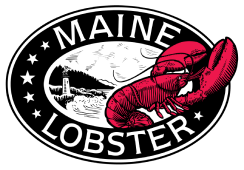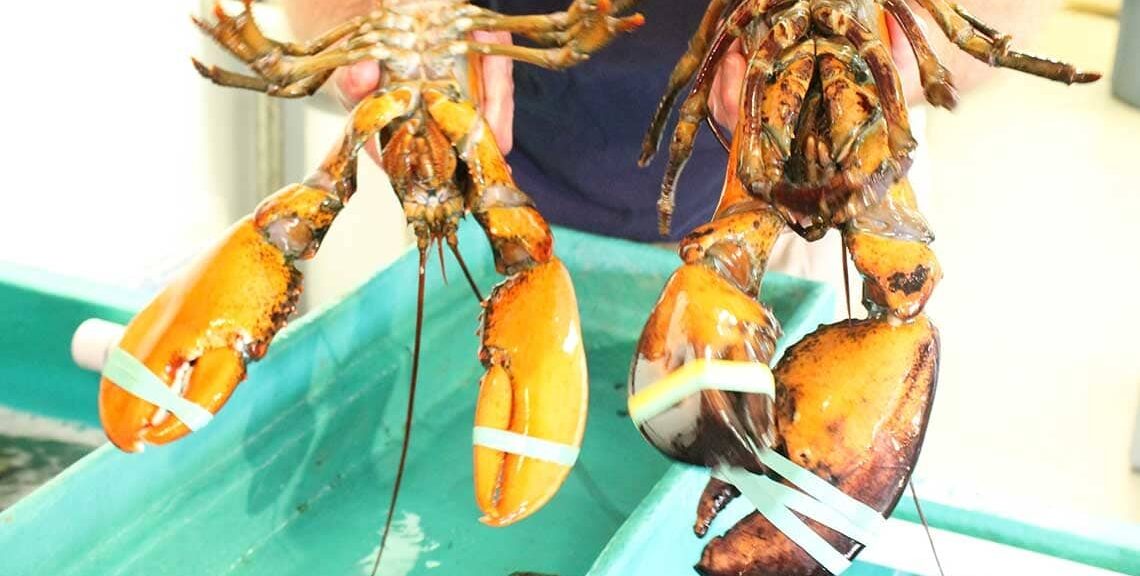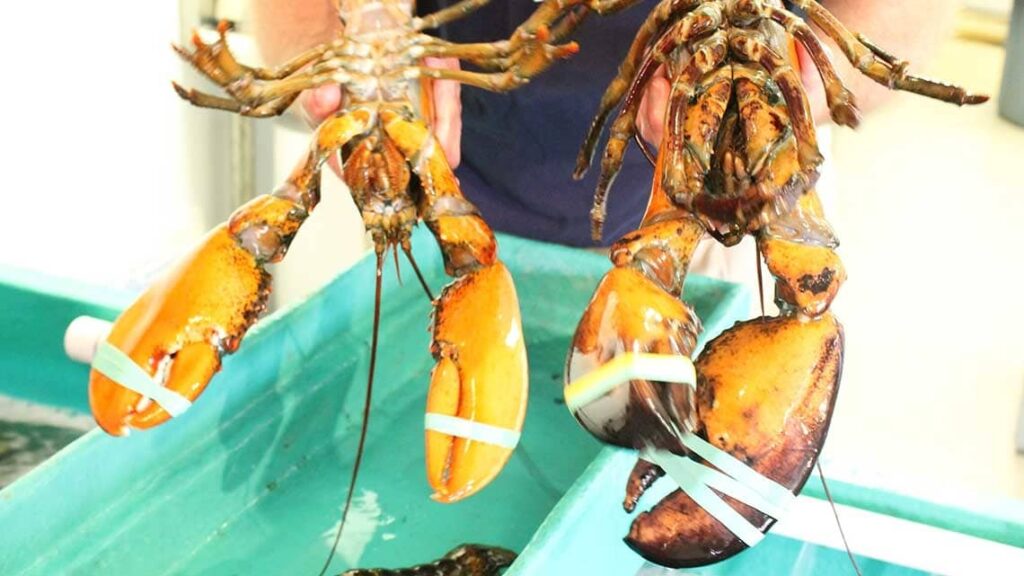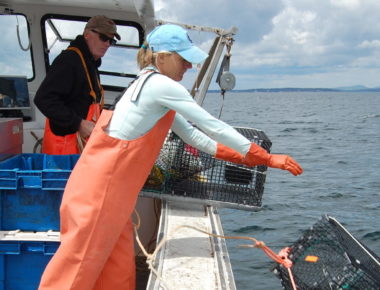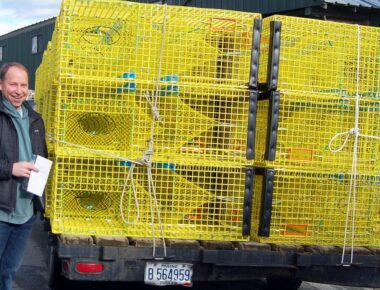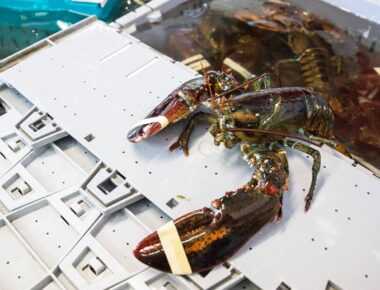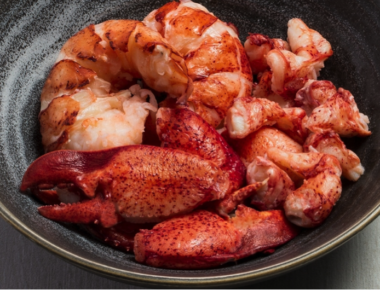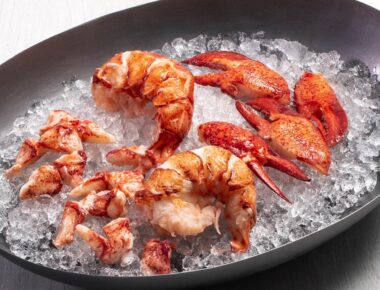Can you tell the difference between a New Shell and Hard Shell Maine Lobster? With these simple steps, becoming a lobster a-fish-ionado is as easy as 1-2-EAT.
But before we get to that, if you’re reading this thinking “Wait, wait, wait… you’re telling me there’s more than one kind of Maine Lobster?” let us fill you in!
From mid-June to November, lobsters in the cold, clean waters of Maine shed their shells and reveal new, larger ones underneath – the result: Maine New Shell Lobster. As the lobsters grow into their newly formed shell, there is a gap between the meat and the shell that seawater fills, allowing it to naturally marinate the meat. The result is the sweetest, most tender, most lobster-y lobster on earth.
Maine Hard Shell Lobsters are caught year-round, but are much more prevalent in the winter and spring months from December to May, when the lobsters are caught in colder waters found farther offshore. Hard Shell lobsters are packed full of tasty lobster meat that has a more durable texture when used in cooking.
So, how do you tell the difference?
BASED ON LOOKS ALONE:
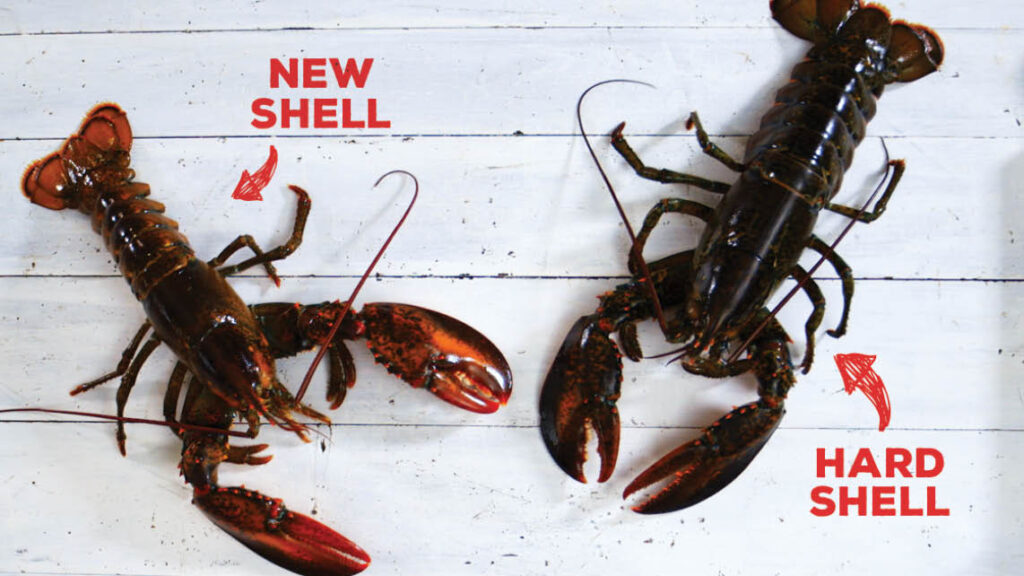
The easiest way to identify a Maine New Shell Lobster is by its softer, more malleable shell. When you squeeze the body (also known as a carapace) of a live New Shell, the shell will indent under the pressure of your hand – but be careful, as you may be able to crack through the shell completely! A live Hard Shell has a thicker shell, which will have a much smaller response to squeezes (if any at all).
Another easy trick? The live lobster’s color. If you have a New Shell, the color of the shell will be fairly pristine, with very few dents or scars and crisp, clean claws and underbellies. A Hard Shell will have spent more time exploring the ocean floor, resulting in scars and scuffs which appear darker in color. Once the lobsters are cooked, a New Shell will turn a bright, orangey red, while a Hard Shell will turn a deeper red, with its scars and scuffs still visible.
ROLL UP YOUR SLEEVES:
If your first few tests have been too close to call, break into your cooked lobsters. With a Maine New Shell Lobster, you’ll notice that almost no tools are required. A stack of napkins and your bare hands are typically all that is needed to extract every morsel of lobster meat. With a Hard Shell, a pair of lobster crackers, a mallet or a pair of kitchen shears are typically required.
Once you get through the shell, you’ll notice that in a New Shell, the cooked lobster’s meat will be a bright white with lots of bright red flecks. In a Hard Shell, the meat will be a softer white with muted, pinkish flecks of color.
THE TASTE TEST:
The fun really begins with a side-by-side taste test. In a New Shell, that bright red lobster meat will have a noticeably tender, sweeter flavor – a result of trapped ocean water marinating within the lobster’s shell. In a Hard Shell, you’ll find a denser meat with a briny flavor – a result of the meat fully filling the shell, leaving very little room for ocean water.
NEXT STEP?
Enjoy the fruits of your labor – it’s time to slow down and savor Maine’s most famous treat. Cheers!
